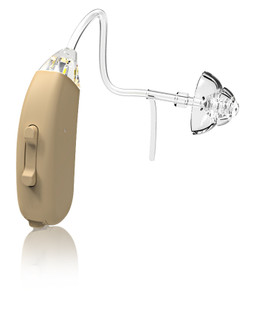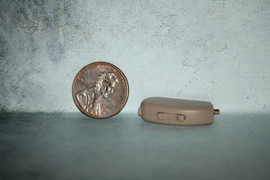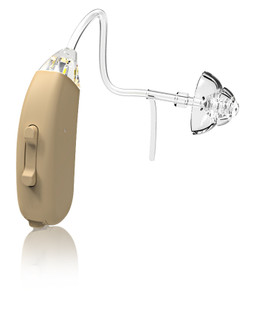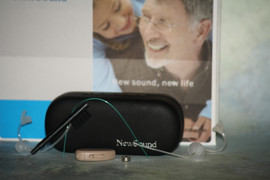Clear Conversations Understanding Hearing Loss and Finding Solutions
Posted by DR Paul on Jul 01, 2024
Imagine sitting in a lively café, your friend’s voice lost in the ambient noise. Or perhaps you strain to catch the dialogue in your favorite TV show, the words just a muffled blur. These scenarios are familiar to many who experience hearing loss. Understanding the different types of hearing loss, their causes, and the solutions available can significantly improve your quality of life. This blog aims to demystify hearing loss and guide you toward better hearing health.
What is Hearing Loss?
Hearing loss is a common condition affecting millions worldwide. It can be temporary or permanent, mild or profound. At its core, hearing loss means you have reduced ability to hear sounds. This can affect your daily interactions, emotional well-being, and overall quality of life.
Types of Hearing Loss
Understanding the types of hearing loss is essential for finding the right treatment. There are three primary types:
- Conductive Hearing Loss occurs when sound cannot efficiently travel through the outer or middle ear.
- Sensorineural Hearing Loss happens when there's damage to the inner ear or the auditory nerve.
- Mixed Hearing Loss is a combination of both conductive and sensorineural hearing loss.
Conductive Hearing Loss Explained
Conductive hearing loss is often temporary and can be treated. It occurs when there is an obstruction or damage preventing sound waves from reaching the inner ear.
Common Causes
Several factors can lead to conductive hearing loss:
- Ear Infections can cause fluid buildup in the middle ear.
- Earwax Blockage is a common issue where excess earwax obstructs the ear canal.
- Eardrum Perforation might happen due to injury or infection, hindering sound transmission.
Treatment Options
Treatment usually addresses the underlying cause:
- Medications can clear infections.
- Earwax Removal by a professional can instantly restore hearing.
- Surgery might be necessary for severe cases like eardrum perforation.
Sensorineural Hearing Loss Unveiled
Sensorineural hearing loss is usually permanent and results from damage to the inner ear or auditory nerve.
Common Causes
Several factors contribute to sensorineural hearing loss:
- Aging is the most common cause, known as presbycusis.
- Noise Exposure from loud environments or sudden loud noises damages the inner ear.
- Genetics plays a role in some cases, with hereditary conditions leading to hearing loss.
Treatment Options
Though it’s often irreversible, treatments can help manage the condition:
- Hearing Aids amplify sounds to make them easier to hear.
- Cochlear Implants might be suitable for severe cases, bypassing damaged parts of the ear.
- Assistive Listening Devices can be used in conjunction with hearing aids for better sound clarity.
Understanding Mixed Hearing Loss
Mixed hearing loss is a combination of conductive and sensorineural elements. This type may require a multifaceted approach for treatment.
Common Causes
Mixed hearing loss can stem from any combination of the causes mentioned above.
Treatment Options
A comprehensive treatment plan might include:
- Medical Treatment for conductive elements like infections or blockages.
- Hearing Aids or Implants to address sensorineural aspects.
- Ongoing Monitoring to adjust treatments as needed.
Recognizing Symptoms of Hearing Loss
Identifying hearing loss early can lead to better outcomes. Common symptoms include:
- Difficulty Hearing Conversations especially in noisy environments.
- Frequently Asking for Repetition when talking to others.
- Increasing the Volume on electronic devices beyond what others find comfortable.
When to Seek Help
It’s essential to consult a healthcare professional if you experience:
- Sudden Hearing Loss in one or both ears.
- Persistent Ear Pain or discomfort.
- Ringing in the Ears known as tinnitus.
How Hearing Aids Can Help
Hearing aids are a common solution for many types of hearing loss. They come in various styles and technologies to suit different needs.
Types of Hearing Aids
Hearing aids range from basic to advanced models with various features:
- Behind-the-Ear (BTE) Hearing Aids fit comfortably behind the ear and are suitable for most types of hearing loss.
- In-the-Ear (ITE) Hearing Aids are custom-made to fit the outer ear and are less visible.
- Completely-in-Canal (CIC) Hearing Aids are almost invisible and fit deep within the ear canal.
Benefits of Hearing Aids
Hearing aids offer numerous benefits:
- Improved Communication makes conversations clearer and more enjoyable.
- Better Quality of Life by reducing the strain of listening and improving social interactions.
- Increased Safety as you become more aware of your surroundings.
The Role of Expert Curation in Hearing Aids
Choosing the right hearing aid requires expert guidance. Audiologists and hearing care professionals can provide valuable insights.
What to Expect During a Hearing Test
A hearing test is a critical step in diagnosing and addressing hearing loss:
- Initial Consultation involves discussing your symptoms and medical history.
- Hearing Evaluation includes a series of tests to determine the extent and type of hearing loss.
- Recommendation based on your specific needs and lifestyle.
Tasting Notes for Your Ears
Just like wine tasting, selecting a hearing aid involves understanding the subtle nuances of sound. Audiologists can help you identify the best options to suit your hearing preferences.
Exclusive Deals for Subscribers
Customers of hear-better.com receive exclusive benefits:
- Discounts on hearing aids and accessories.
- Priority Access to new products and technologies.
- Personalized Support from dedicated hearing care professionals.
Building a Sense of Community
Joining the hear-better.com community offers more than just products:
- Support Forums where members share experiences and advice.
- Educational Webinars on hearing health and maintenance.
- Local Events to connect with others facing similar challenges.
Conclusion
Understanding the different types of hearing loss, their causes, and the available solutions is crucial for improving your quality of life. Whether you’re experiencing conductive, sensorineural, or mixed hearing loss, there are treatments and technologies available to help you hear better.
If you’re ready to take the next step, visit hear-better.com to explore our range of hearing aids and connect with our community of experts and fellow users. Better hearing is just a click away.










